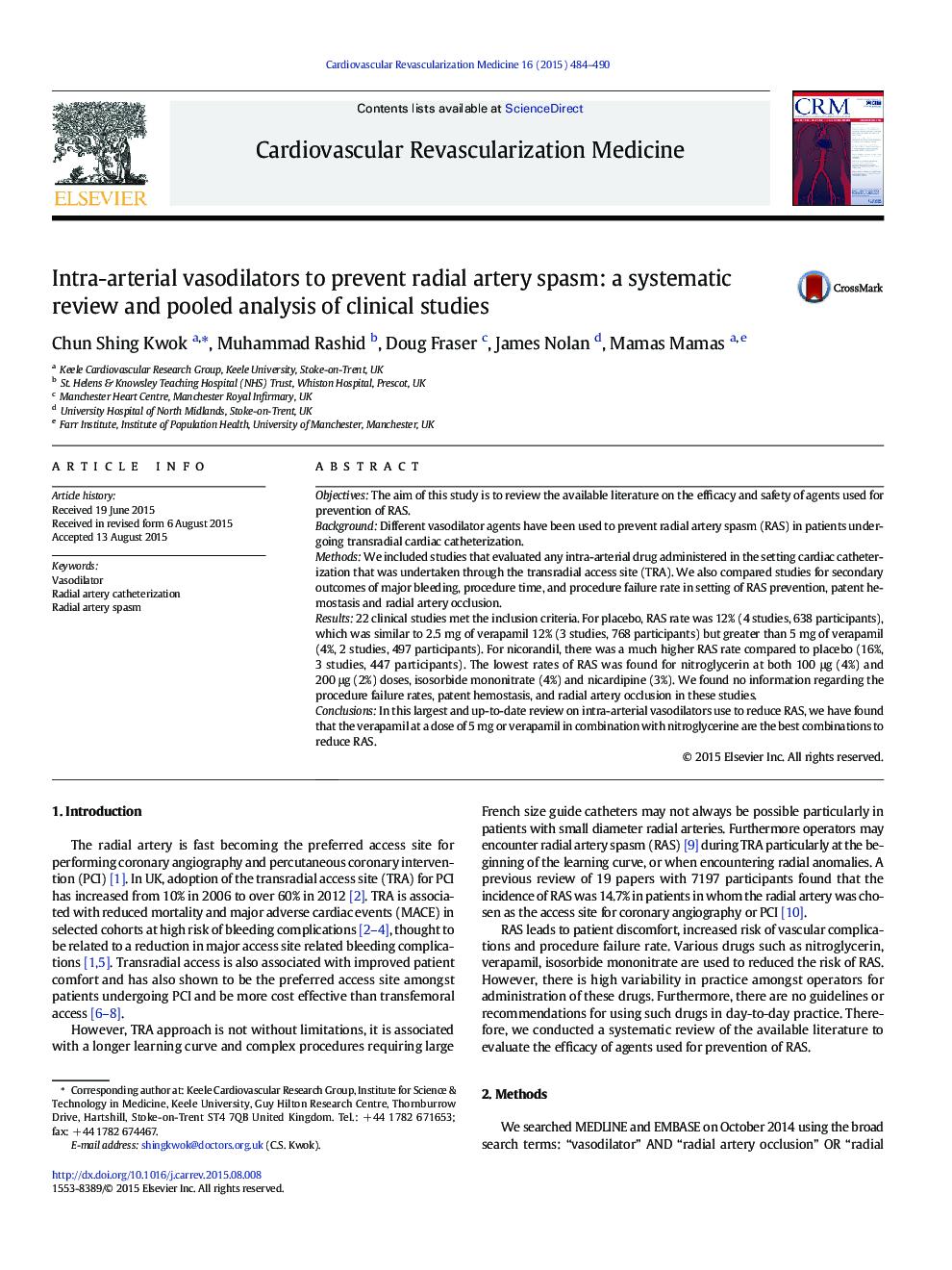| Article ID | Journal | Published Year | Pages | File Type |
|---|---|---|---|---|
| 5921130 | Cardiovascular Revascularization Medicine | 2015 | 7 Pages |
â¢Radial artery spasm (RAS) causes procedural failure in transradial catheterization.â¢RAS may complicate 10-15% procedures undertaken through the radial approach.â¢We reviewed the efficacy of vasodilators that have been used to minimize RAS.â¢The pooled RAS rate was lowest with 5 mg of verapamil (4%) compared to placebo (12%).â¢The best combination of drugs to minimize RAS is nitroglycerine and verapamil.
ObjectivesThe aim of this study is to review the available literature on the efficacy and safety of agents used for prevention of RAS.BackgroundDifferent vasodilator agents have been used to prevent radial artery spasm (RAS) in patients undergoing transradial cardiac catheterization.MethodsWe included studies that evaluated any intra-arterial drug administered in the setting cardiac catheterization that was undertaken through the transradial access site (TRA). We also compared studies for secondary outcomes of major bleeding, procedure time, and procedure failure rate in setting of RAS prevention, patent hemostasis and radial artery occlusion.Results22 clinical studies met the inclusion criteria. For placebo, RAS rate was 12% (4 studies, 638 participants), which was similar to 2.5 mg of verapamil 12% (3 studies, 768 participants) but greater than 5 mg of verapamil (4%, 2 studies, 497 participants). For nicorandil, there was a much higher RAS rate compared to placebo (16%, 3 studies, 447 participants). The lowest rates of RAS was found for nitroglycerin at both 100 μg (4%) and 200 μg (2%) doses, isosorbide mononitrate (4%) and nicardipine (3%). We found no information regarding the procedure failure rates, patent hemostasis, and radial artery occlusion in these studies.ConclusionsIn this largest and up-to-date review on intra-arterial vasodilators use to reduce RAS, we have found that the verapamil at a dose of 5 mg or verapamil in combination with nitroglycerine are the best combinations to reduce RAS.
